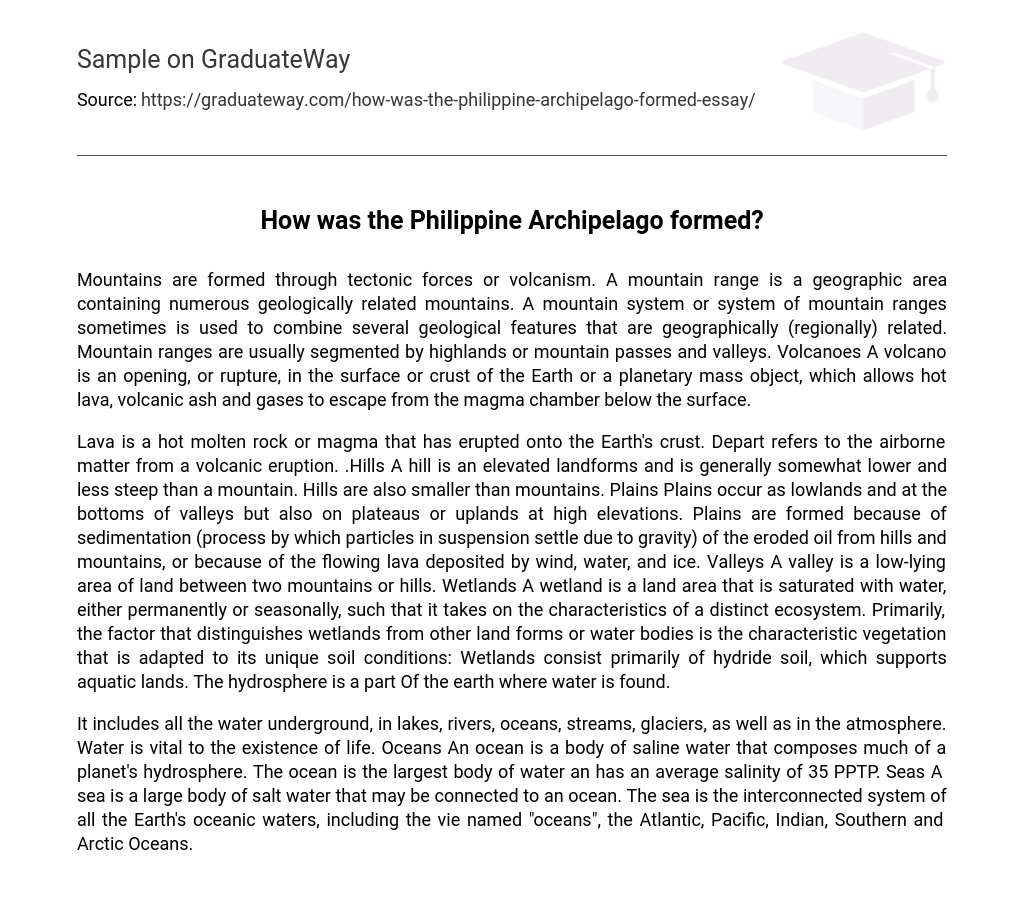Mountains are formed through tectonic forces or volcanism. A mountain range is a geographic area containing numerous geologically related mountains. A mountain system or system of mountain ranges sometimes is used to combine several geological features that are geographically (regionally) related. Mountain ranges are usually segmented by highlands or mountain passes and valleys. Volcanoes A volcano is an opening, or rupture, in the surface or crust of the Earth or a planetary mass object, which allows hot lava, volcanic ash and gases to escape from the magma chamber below the surface.
Lava is a hot molten rock or magma that has erupted onto the Earth’s crust. Depart refers to the airborne matter from a volcanic eruption. .Hills A hill is an elevated landforms and is generally somewhat lower and less steep than a mountain. Hills are also smaller than mountains. Plains Plains occur as lowlands and at the bottoms of valleys but also on plateaus or uplands at high elevations. Plains are formed because of sedimentation (process by which particles in suspension settle due to gravity) of the eroded oil from hills and mountains, or because of the flowing lava deposited by wind, water, and ice. Valleys A valley is a low-lying area of land between two mountains or hills. Wetlands A wetland is a land area that is saturated with water, either permanently or seasonally, such that it takes on the characteristics of a distinct ecosystem. Primarily, the factor that distinguishes wetlands from other land forms or water bodies is the characteristic vegetation that is adapted to its unique soil conditions: Wetlands consist primarily of hydride soil, which supports aquatic lands. The hydrosphere is a part Of the earth where water is found.
It includes all the water underground, in lakes, rivers, oceans, streams, glaciers, as well as in the atmosphere. Water is vital to the existence of life. Oceans An ocean is a body of saline water that composes much of a planet’s hydrosphere. The ocean is the largest body of water an has an average salinity of 35 PPTP. Seas A sea is a large body of salt water that may be connected to an ocean. The sea is the interconnected system of all the Earth’s oceanic waters, including the vie named “oceans”, the Atlantic, Pacific, Indian, Southern and Arctic Oceans.





